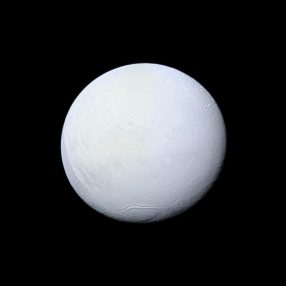Did Plate Tectonics Freeze the Planet?
December 3, 2018

A research duo from The University of Texas at Austin and UT Dallas have put forward a hypothesis that links the dawn of plate tectonics with “snowball Earth” — a period of climate change that sent the planet into a deep freeze that lasted millions of years.
They expect their hypothesis to generate controversy. Geologists usually place the start of plate tectonics at about 3 billion years ago, while the new hypothesis puts the process in a much younger era known as the Neoproterozoic, which occurred about 542 million to 1 billion years ago.
“If you look at the preserved record, diagnostic evidence for modern plate tectonics involving deep subduction is mainly Neoproterozoic and younger,” said co-author Nathaniel Miller, a research scientist in the Department of Geological Sciences at the Jackson School of Geosciences. “But most people think we had this much earlier in Earth history.”
Miller and Robert Stern, a professor in the UT Dallas Department of Geosciences, examined a suite of published scientific data on the geological activity during the Neoproterozoic — the era of snowball Earth — and found a link between plate tectonics and a cooling world.
The research was published in the April 2018 edition of the journal Terra Nova. Plate tectonics is one of the most fundamental processes that shape the planet, and most geoscientists believe it has been active for most of the planet’s 4.5 billion-year history. However, according to Miller and Stern, there are a variety of traces in the geologic record that could be consistent with plate tectonics not getting started until the Neoproterozoic. The authors also note the geologic interval preceding the Neoproterozoic shows a lack of
geological activity — a feature that has earned it the nickname “the boring billion,” and which could indicate that the Earth was covered by a single lithospheric lid rather than the many moving plates of today.
The overlap in timing between the appearance of these signatures of plate tectonic activity and Earth’s snowball
phase led the researchers to think that they could be related. The paper lists 22 proposed ways plate tectonic activity could have brought about global cooling that caused the Earth to be covered from pole to pole with ice. They include volcanoes cooling the planet by releasing sulfur into the atmosphere; the shifting
of the plates changing the planet’s rotational axis; and increased rock weathering pulling CO2 — a greenhouse
gas — out of the atmosphere and back into the Earth.
The authors note that their paper presents a possible scenario in Earth’s history, and hope that this research will lead other geoscientists to consider the evidence and test the hypothesis.
Back to the Newsletter